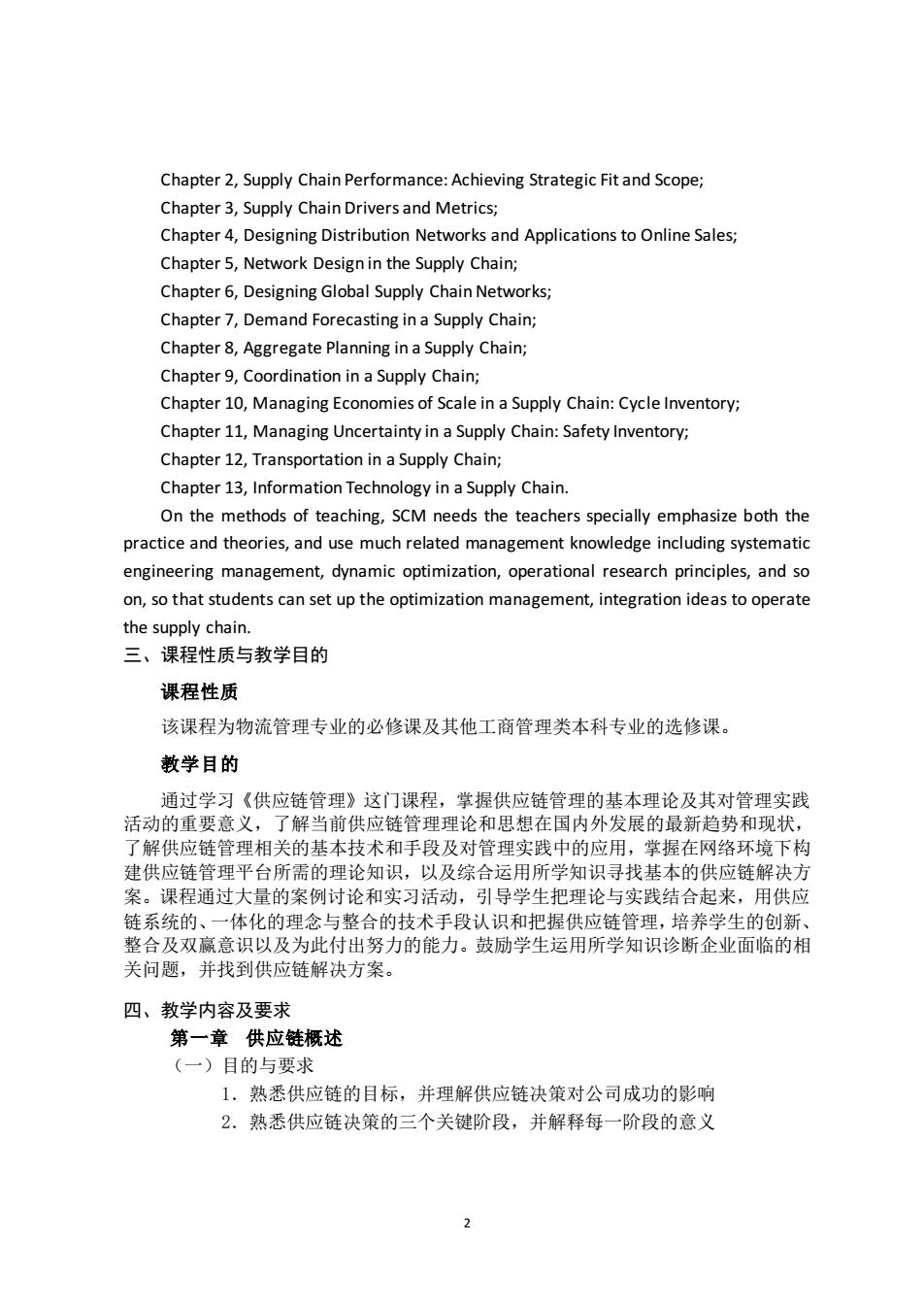正在加载图片...

Chapter 2,Supply Chain Performance:Achieving Strategic Fit and Scope; Chapter 3,Supply Chain Driversand Metrics; Chapter 4,Designing Distribution Networks and Applications to Online Sales; Chapter 5,Network Design in the Supply Chain; Chapter 6,Designing Global Supply Chain Networks; Chapter 7,Demand Forecasting in a Supply Chain; Chapter8,Aggregate Planning in a Supply Chain Chapter 9,Coordination in a Supply Chain; Chapter 10,Managing Economies of Scale in a Supply Chain:Cycle Inventory; Chapter 11,Managing Uncertainty in a Supply Chain:Safety Inventory: Chapter 12,Transportation in a Supply Chain; Chapter 13,Information Technology in a Supply Chain. On the methods of teaching,SCM needs the teachers specially emphasize both the practice and theories,and use much related management knowledge including systematic engineering management,dynamic optimization,operational research principles,and so on,so that students can set up the optimization management,integration ideas to operate the supply chain. 三、课程性质与教学目的 课程性质 该课程为物流管理专业的必修课及其他工商管理类本科专业的选修课 教学目的 通过学习《供应链管理》这门课程,掌握供应链管理的基本理论及其对管理实践 活动的重要意义,了解当前供应链管理理论和思想在国内外发展的最新趋势和现状, ?解世应解管理相关的基木技术和毛及对管理:践中的应用,堂在网终环墙下松 建供应链管 理论 以及综合运 用所学 只寻找基本的供应链解决方 案。课程通过大量的案例讨论和实习活动,引导学生把理论与实践结合起来,用供应 链系统的、一体化的理念与整合的技术手段认识和把握供应链管理,培养学生的创新、 整合及双赢意识以及为此付出努力的能力。鼓励学生运用所学知识诊断企业面临的相 关问顺,并找到供应链解决方案。 四、教学内容及要求 第一章供应链概述 (一)目的与要求 1.熟悉供应链的目标,并理解供应链决策对公司成功的影响 2.熟悉供应链决策的三个关键阶段,并解释每一阶段的意义 2 Chapter 2, Supply Chain Performance: Achieving Strategic Fit and Scope; Chapter 3, Supply Chain Drivers and Metrics; Chapter 4, Designing Distribution Networks and Applications to Online Sales; Chapter 5, Network Design in the Supply Chain; Chapter 6, Designing Global Supply Chain Networks; Chapter 7, Demand Forecasting in a Supply Chain; Chapter 8, Aggregate Planning in a Supply Chain; Chapter 9, Coordination in a Supply Chain; Chapter 10, Managing Economies of Scale in a Supply Chain: Cycle Inventory; Chapter 11, Managing Uncertainty in a Supply Chain: Safety Inventory; Chapter 12, Transportation in a Supply Chain; Chapter 13, Information Technology in a Supply Chain. On the methods of teaching, SCM needs the teachers specially emphasize both the practice and theories, and use much related management knowledge including systematic engineering management, dynamic optimization, operational research principles, and so on, so that students can set up the optimization management, integration ideas to operate the supply chain. 三、课程性质与教学目的 课程性质 该课程为物流管理专业的必修课及其他工商管理类本科专业的选修课。 教学目的 通过学习《供应链管理》这门课程,掌握供应链管理的基本理论及其对管理实践 活动的重要意义,了解当前供应链管理理论和思想在国内外发展的最新趋势和现状, 了解供应链管理相关的基本技术和手段及对管理实践中的应用,掌握在网络环境下构 建供应链管理平台所需的理论知识,以及综合运用所学知识寻找基本的供应链解决方 案。课程通过大量的案例讨论和实习活动,引导学生把理论与实践结合起来,用供应 链系统的、一体化的理念与整合的技术手段认识和把握供应链管理,培养学生的创新、 整合及双赢意识以及为此付出努力的能力。鼓励学生运用所学知识诊断企业面临的相 关问题,并找到供应链解决方案。 四、教学内容及要求 第一章 供应链概述 (一)目的与要求 1.熟悉供应链的目标,并理解供应链决策对公司成功的影响 2.熟悉供应链决策的三个关键阶段,并解释每一阶段的意义